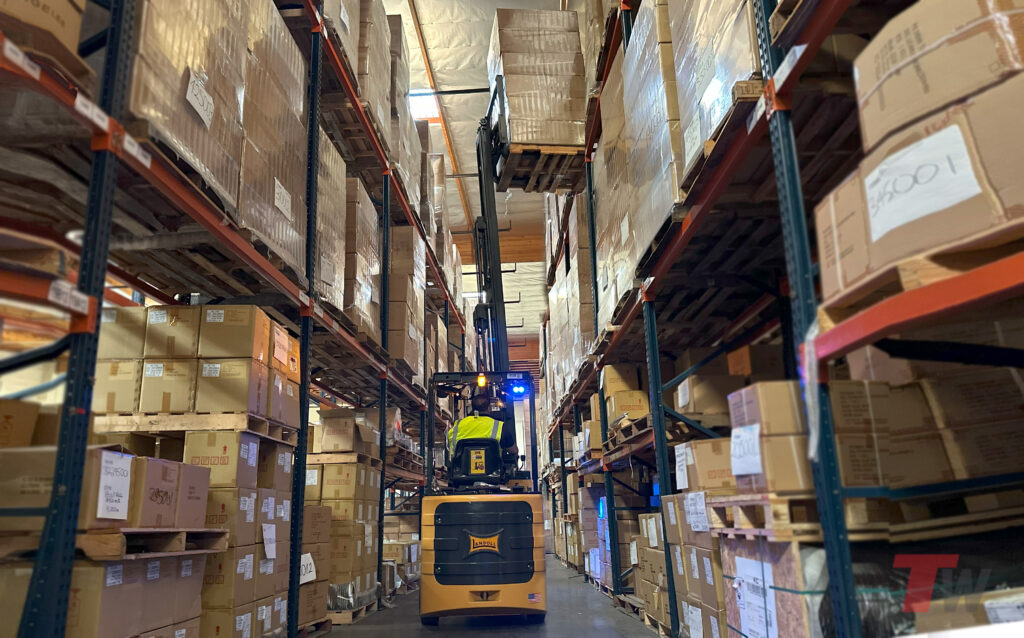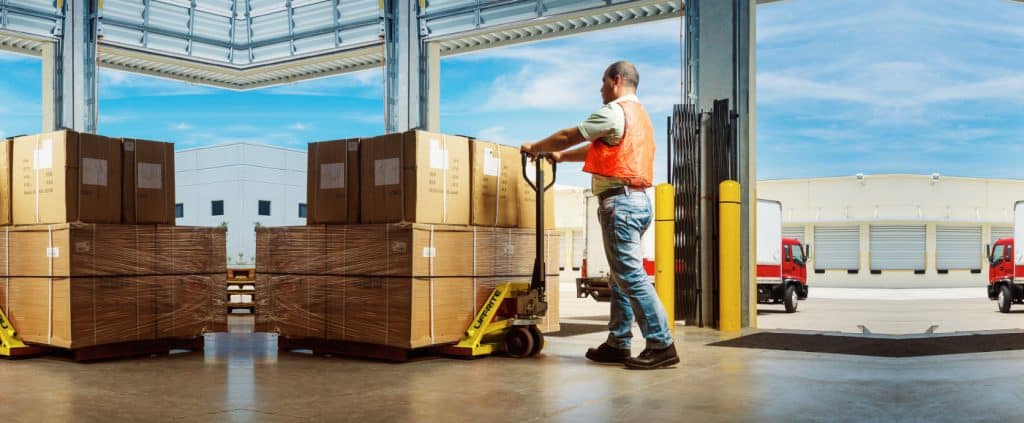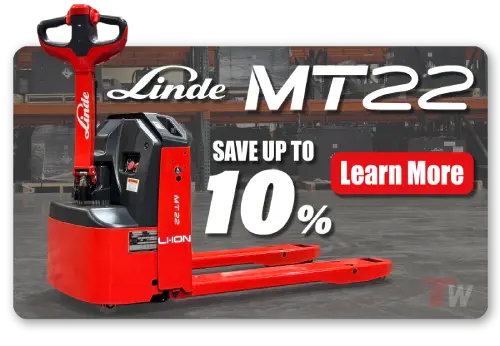How Bendi Forklifts Compare to Reach Trucks

A recently completed test at a large 3PL Company that has always used reach trucks revealed:
Fact: The Bendi is far superior to a reach truck for general pallet handling in a crowded dock situation. Because the Bendi is narrow (42″) it is also far better at bulk storage.
Fact: The Bendi is faster at pallet put away and removal in 78″ aisle than the reach truck is in a 108″ aisle. That smaller aisle generates 15%/20% more pallet storage in the same space. How much is 20% of your real estate cost over a 7 year (life of truck) time frame?
Fact: In a test run of driving approximately 30 feet then pulling a pallet at floor level the Bendi with an experienced driver had the pallet pulled and was driving away in 17 seconds. The reach truck with a very experienced driver took 25 seconds to do the same thing. The Bendi performs even better at high stacking because its lift/lower speeds match the reach truck, but the Bendi is safe and legal to lift the load while traveling so that when you arrive at the pallet position you spend only about 12 seconds to actually put the load away before moving on. It is not safe or legal to do lifting and traveling with a reach truck – huge advantage to the Bendi. A 15% productivity increase is worth about $50,000 over a 7 year life span of a truck.
Fact: A company has spent a lot of extra money over the years making their rack “reach truck proof.” This means putting double rack posts at the low levels and putting bolt-in post protectors at every upright to keep the base legs of the reach truck from impacting them and bending them. The Bendi does not have base legs and has no rear tail swing. The Bendi does not damage rack. No need to spend that added money for rack protection.
Fact: The Bendi gives its operator an unrestricted view to the work zone at the side of the truck when the operator works with a pallet so no product damage occurs. The reach truck obstructs the operator’s view with a pantograph and mast that causes product damage over the entire life of the truck. How much product and rack damage will you save in 7 years?
Fact: Training new operators to drive a Bendi takes only about 20 minutes even if they have never driven a forklift of any type. This is because a Bendi drives like a car! A reach truck for a new operator is far more difficult to learn. The amount of likely damage to product and rack with new operators dramatically favors the Bendi. How many new operators will you have over 7 years?
Fact: A seated driver “in the most comfortable seat in the building” will stay with his truck longer every day and move more pallets per hour for more hours every day than the poor guy with the sore knees and back who is driving the reach truck and taking breaks.
Fact: The large tires and the lack of a pantograph make a Bendi far less expensive to maintain than a reach truck with small wheels and hosing pinch points.
Fact: Reach trucks have very low residual values at the end of leases or when they are used equipment. The Bendi has far better retention of value which is a further help in lowering ownership costs.
Fact: Ordering picking efficiency with man-up pickers improves by 20%/30% in VNA Bendi aisles verses wider reach truck aisles. You pick both sides from top to bottom in a single pass down the middle of the aisle. The close rack puts close “walls” on each side which makes the picking person feel more secure so he/she can move more quickly. Orderpicking can represent 75% of work in a warehouse. This is a gold mine.

8 GREAT Reasons to Invest in a BENDI Forklift Instead of a Reach Truck
1. A Bendi Truck is two trucks in one. It is a dockworker and a narrow aisle truck. You go directly from the over the road truck to the rack with no staging. Studies show that every time you move a pallet it costs at least a dollar. Double handling is twice as expensive. How many pallets does your company move in 5 years? (This concept does not apply if mast is too tall to fit in truck.)
2. A Bendi works in a smaller aisle than a reach truck, improving storage density. A Bendi works comfortable in a 6 to 6 ½ foot aisle and reach trucks – to be as comfortable – would require 9 foot wide aisles. A 3 foot wide swath down an aisle 100 feet long at $5.00 per square foot per year means a $1,500.00 value per aisle, per year. Five aisles value is $37,500 in five years.
3. A Bendi has four big tires. Reach trucks have six or seven small wheels that cost as much as Bendi tires to replace. Savings on wheels alone over five years could be $2,000.00.
4. A Bendi doesn’t have a pantograph scissor mechanism to lift up each time any movement takes place. The Bendi actually lifts about 1200 lbs. less weight each lift which saves battery energy. No pantograph means no maintenance on hoses, pistons and pantograph structure. Lifetime savings are about $5,000.00.
5. A Bendi provides the best visibility of any forklift available. The operator sees the entire length of his forks as they go into a pallet. He/she sees the edge of the entire pallet as it goes into the rack. Product damage is reduced.
6. A Bendi handles more like a car than a forklift. Front wheel steer/rear wheel drive gives a rookie operator immediate familiarity. In ½ an hour, a person who has never driven a forklift can be proficient on a Bendi. Reach trucks are known for poor visibility, complicated controls and are difficult to operate.
7. Battery service on a Bendi is as simple as lifting the seat/hood. Reach truck batteries must roll through the truck to access first one side, then the other. This difficult reach truck job is routinely avoided by many workers causing premature battery failure. Batteries for Bendi or reach trucks cost about $6,000.00
8. Your operator sits in a totally protected work space on the Bendi. They stand with exposed limbs in most reach trucks. A comfortable operator stays with his machine longer and gets more work done.
Total Warehouse are proud dealers for Linde, Big Joe, UniCarriers, and Landoll. We’ve helped countless businesses across the United States achieve lower maintenance, reduced costs, increased worker satisfaction, and increased economic sustainability by making the switch. Our team of highly knowledgeable experts can help you make the right decision for your business. Give us a call at 833-868-2500 or contact us online.





